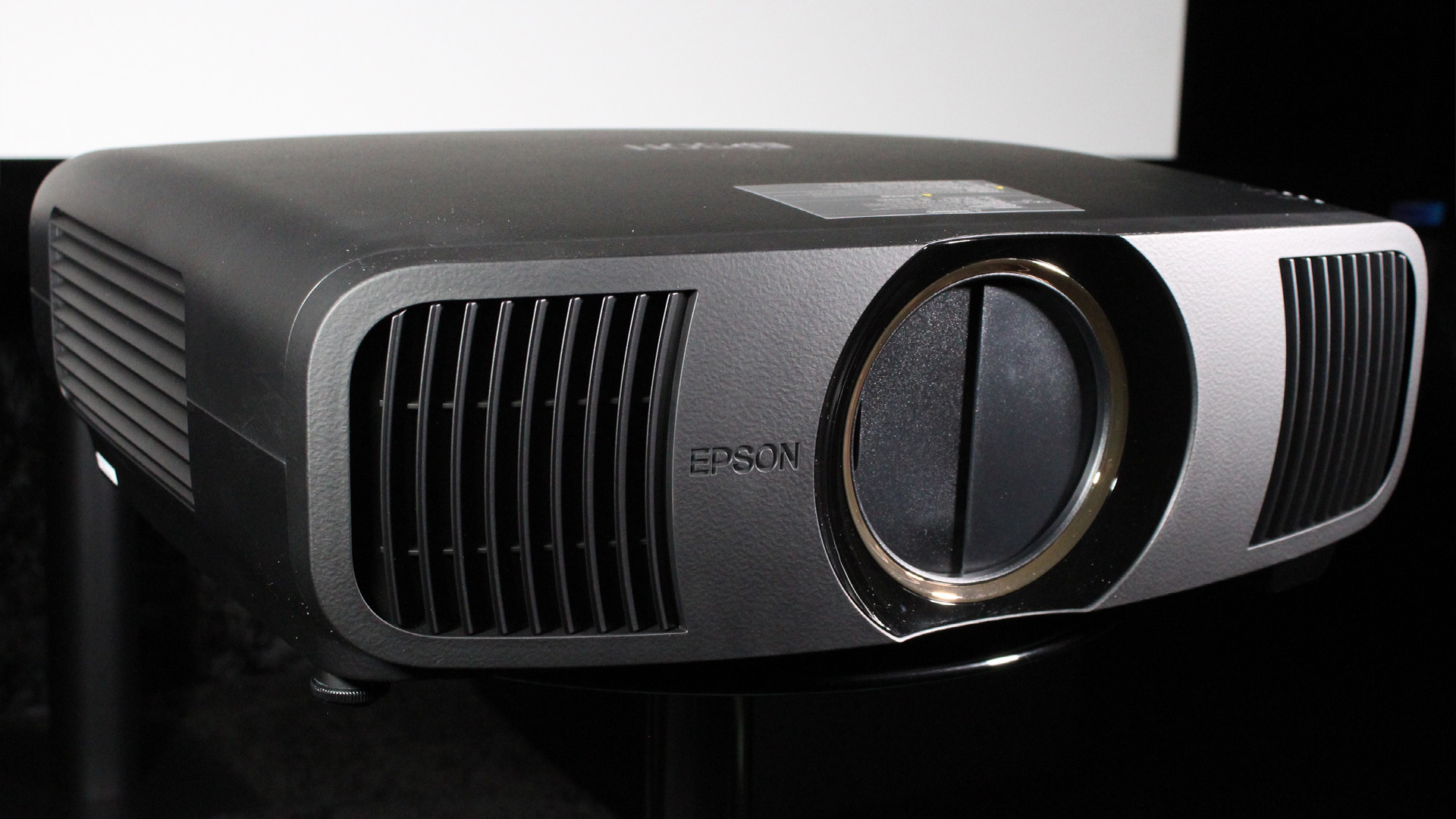
While many of the best projectors out there cost the earth, it doesn't have to be that way. The Epson EH-QB1000 replaces the extremely capable, feature-packed and very affordable EH-LS12000 at the top of the brand’s home cinema line-up, but isn't insanely expensive (depending on your bar).
It retains the laser light source and HDMI 2.1 inputs with support for 4K/120Hz and HDR10+, but boosts the brightness to 3,300 lumens, and adds dynamic HDR tone mapping. The question is, can the QB1000 deliver superior performance while still offering the features and competitive pricing that made the LS12000 such great value?
EPSON EH-QB1000: PRICE & AVAILABILITY
The Epson EH-QB1000 is the new flagship model in the brand’s range of home cinema projectors. It is available now in a choice of matte black or white finishes and currently retails for £4,799 / $7,999 / AU$11,900.
EPSON EH-QB1000 REVIEW: FEATURES & WHAT’S NEW

The Epson EH-QB1000 incorporates the same 3LCD design the brand uses in all its projectors, and this particular technology is limited to Full HD (1920 x 1080 pixels). However, the QB1000 can accept and display 4K content (3840 x 2160 pixels) by using pixel-shifting technology that literally shifts each pixel diagonally to increase the perceived resolution and create more detailed images. That's why it's cheaper than a native 4K resolution equivalent.
Despite using the same laser light source as earlier models, it has a claimed peak brightness of 3,300 lumens, which is massive, and an average lifespan of 20,000 hours. As with all beamers that use LCD display technology, though, the black levels are poor, with the QB1000 producing a claimed native contrast ratio of 5,000:1, although the dynamic laser feature can boost this to 5,000,000:1.
New this time is dynamic tone mapping that analyses HDR10 content and optimises the image, allowing the QB1000 to deliver improved performance with HDR compared to the earlier LS12000. As with the earlier model, there is also support for HDR10+.
The QB1000 has improved motion handling and upgraded frame interpolation. As a result, it can deliver smooth and detailed motion with sport, although I’d recommend leaving the frame interpolation off when watching film-based content. The Epson also supports higher frame rates up to 4K/120Hz, which makes this beamer a great choice for any next-generation gamers.
EPSON EH-QB1000 REVIEW: PERFORMANCE
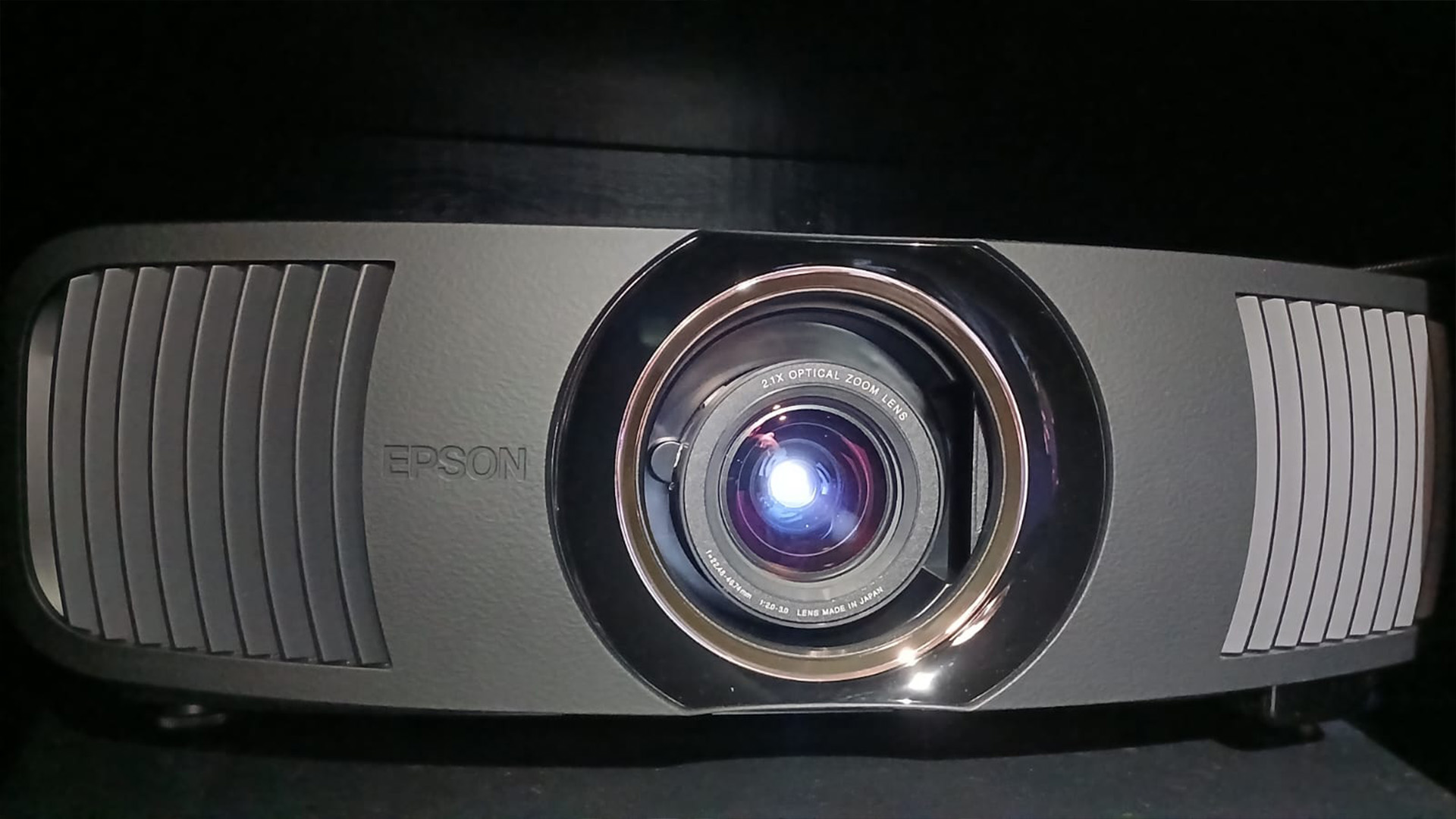
Turning it on for the first time, the Epson EH-QB1000 immediately impresses with bright, vibrant and accurate images. In general, the picture is free of any blemishes or optical aberrations, and the three LCD panels are precisely aligned. While not as sharp as a single-chip DLP beamer, you don’t have to worry about rainbows; but try and avoid excessive dust, because the light path on an LCD beamer isn’t sealed.
Despite not being native 4K, the QB1000 handles Ultra-HD material expertly, and the picture processing is equally effective at upscaling lower-resolution content. The colours are deep and saturated, while motion handling is also excellent, allowing the Epson to deliver images with judder-free smoothness. The frame interpolation feature is very effective with fast-paced sports action.
The QB1000 can get incredibly bright at 3,300 lumens, which puts it in the same league as the range-topping projectors from JVC and Sony – but for less money. It’s also surprisingly quiet, and while the noise levels will increase if you use the higher laser settings, there’s so much brightness available that you don’t need to move the power up too high to illuminate even a large projection screen.
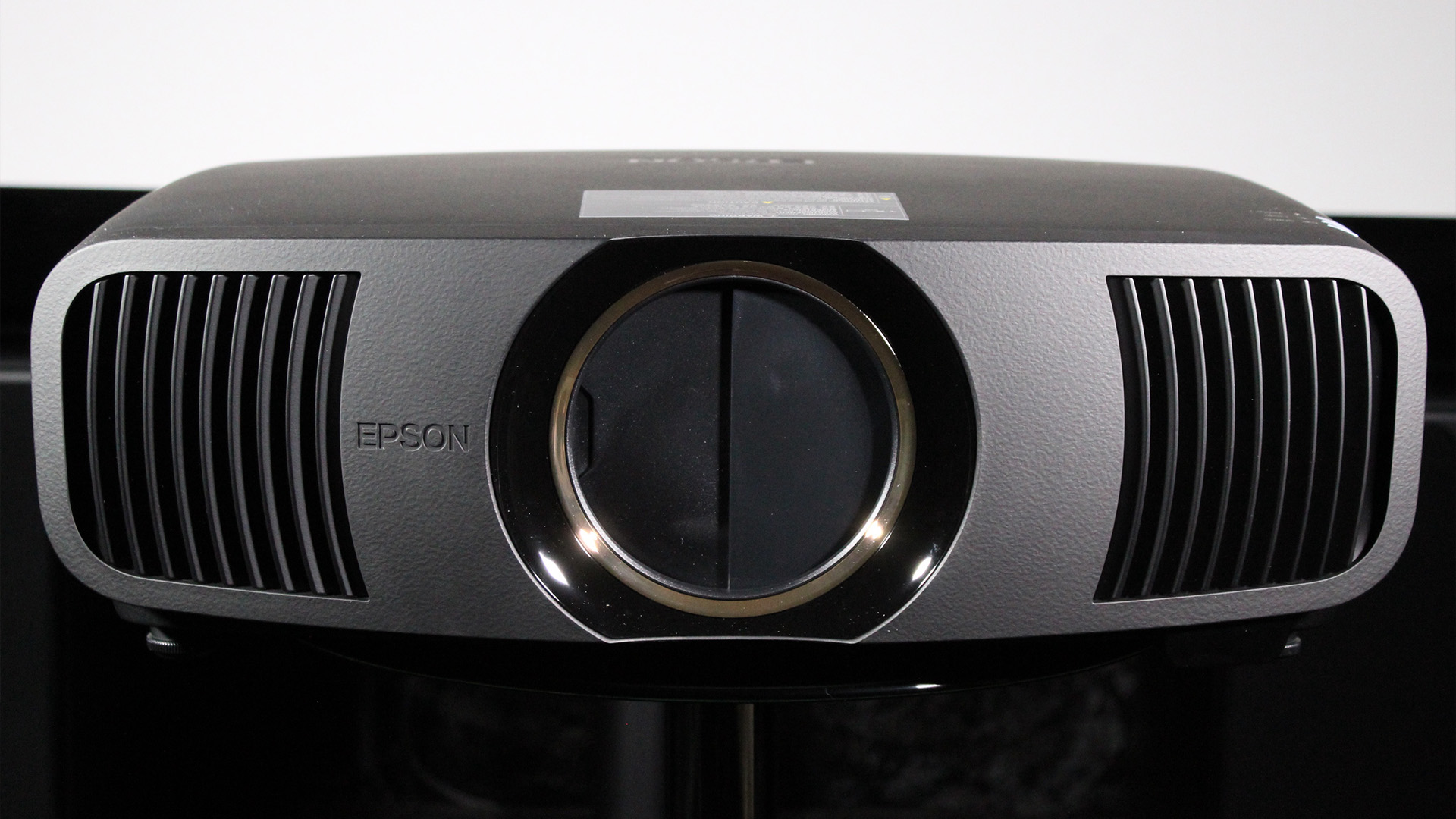
In fact the QB1000 has sufficient brightness to handle rooms with light-coloured walls as well, and the option of a white finish also lends it to more lifestyle-friendly installations. The reflected light in this kind of setup will wash-out the blacks on projectors like the JVC, but with the Epson the extra ambient light has the added advantage of disguising the beamer’s poor contrast performance.
The QB1000’s big weakness is its black levels, with the contrast ratio only measuring 4,300:1 in my tests. At least this is close to the 5,000:1 Epson claims in its marketing, but it does mean blacks look more like a dark grey. You can use the dynamic laser feature to improve the contrast performance but this only helps with fades to black, and also draws attention to the poor blacks.
The QB1000 supports HDR, though, and really impresses with a bright and detailed image where the highlights pop. The QB1000 doesn’t use a colour filter, which means it only covers 88% of the DCI-P3 wide colour gamut, but thanks to the increased brightness and new dynamic tone mapping the results are often genuinely excellent.
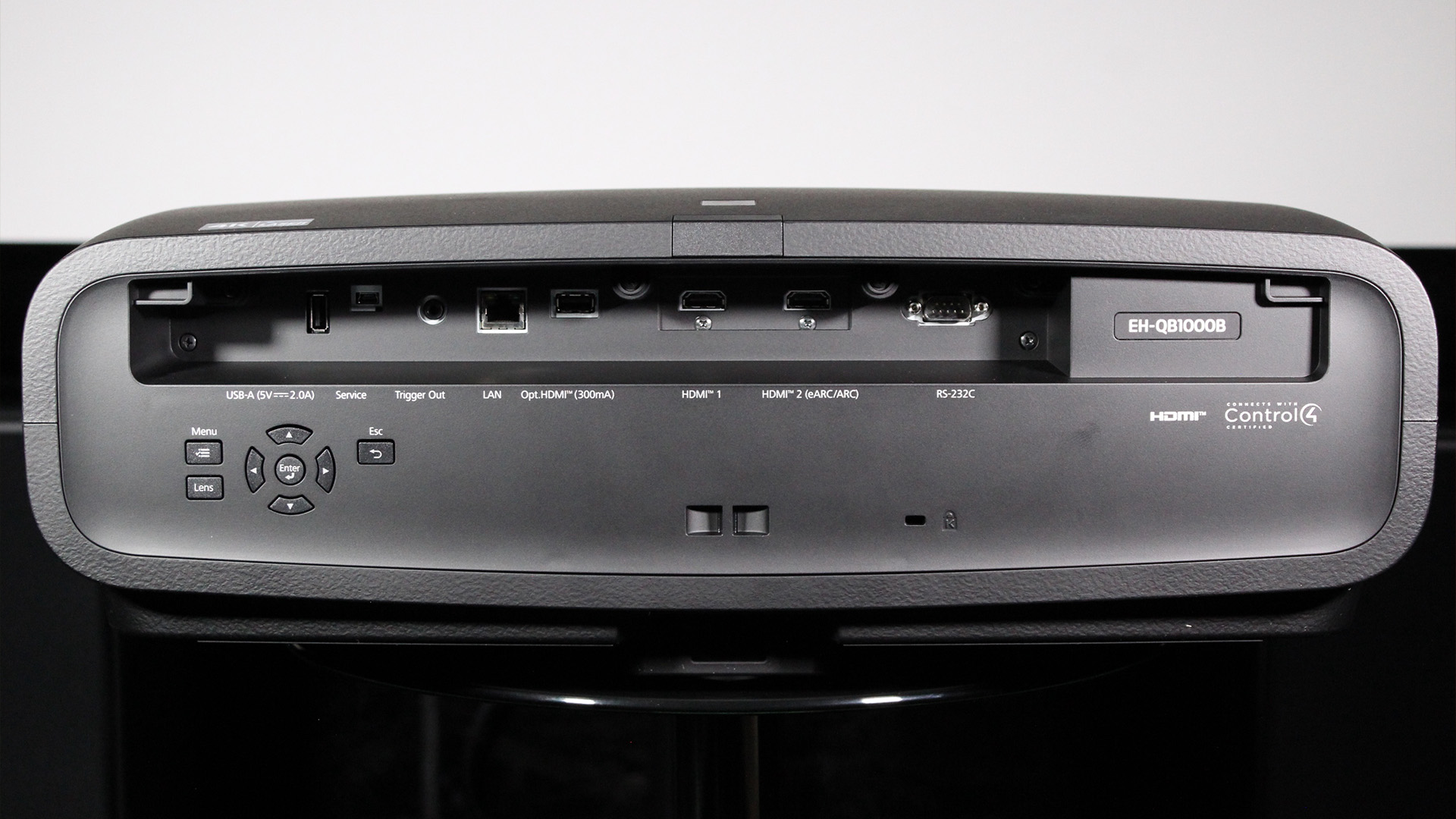
While the QB1000 impresses with regular HDR10 thanks to the addition of dynamic tone mapping, it also supports HDR10+. This dynamic metadata format is becoming more popular now that it’s being used by Amazon Prime and Apple TV+. The added information it provides results in a superior HDR experience because the tone mapping is optimised for the content and projector.
The QB1000 may be aimed at movie lovers but it’s also a compelling choice for console and PC gamers with its punchy 4K HDR images, super-smooth 120Hz frame rates, and support for ALLM (auto low latency mode). Your gameplay will be very responsive, with an input lag of only 19ms in the game mode, while the laser’s long lifespan will undoubtedly encourage all-night gaming sessions.
EPSON EH-QB1000 REVIEW: DESIGN, CONNECTIONS & CONTROL
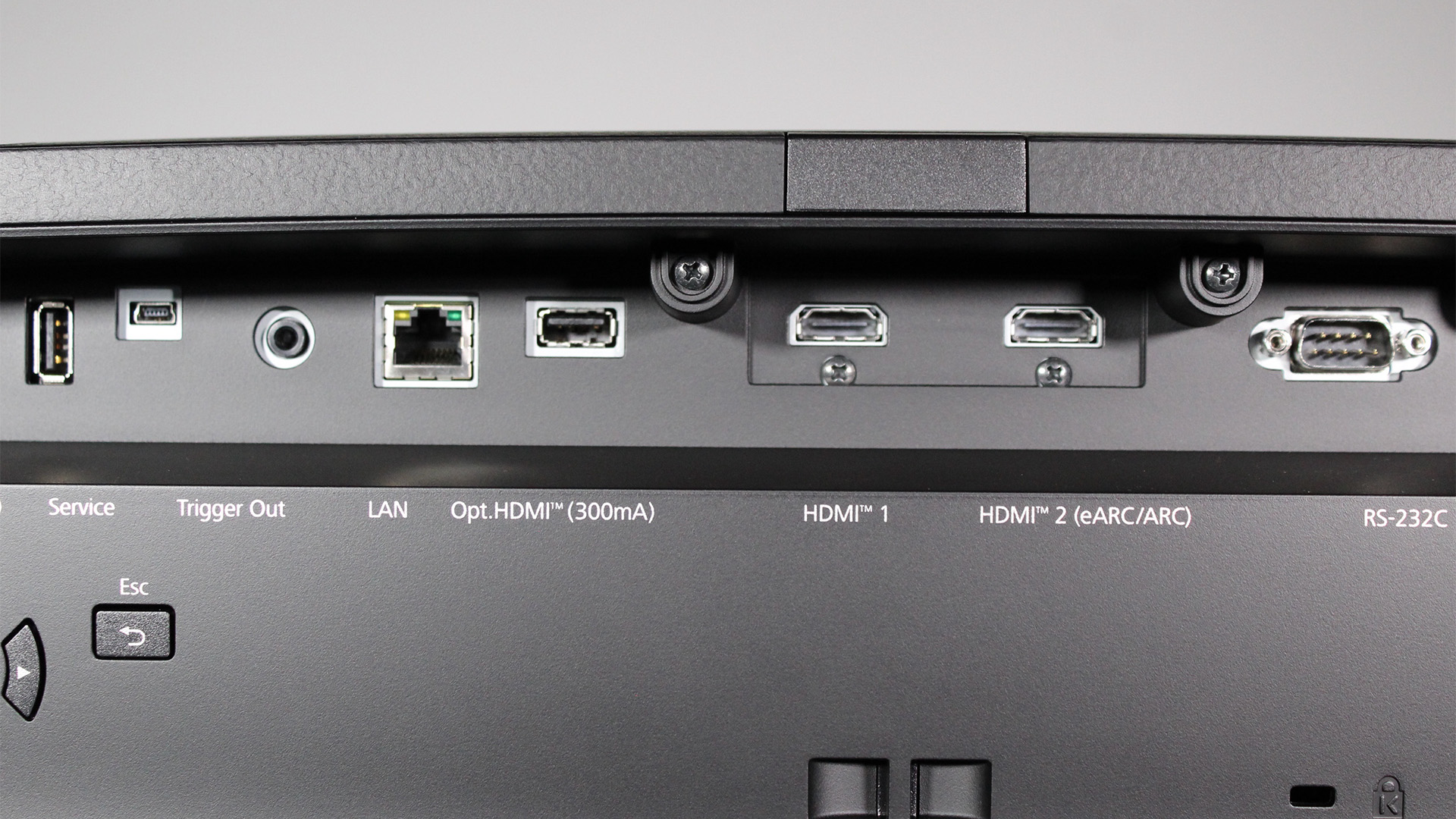
The Epson EH-QB1000 looks identical to the earlier EH-LS12000, with the same imposing chassis and central lens flanked by large forward-firing cooling grilles. The bodywork is solid and well-built, the motorised lens cover is retained, and there are basic controls at the rear, along with a removable cover to keep things tidy. There’s also an optional ceiling mount if necessary.
Connections are located in a long recess at the rear of the unit, where you’ll find two HDMI 2.1 inputs with support for 4K/120Hz, eARC, HDCP 2.3 and HDR10+, along with regular HDR10 and HLG. There are also three USB ports, a 12V trigger output, an Ethernet port and an RS-232C serial connector, along with support for various integrated control systems when used in a custom installation.
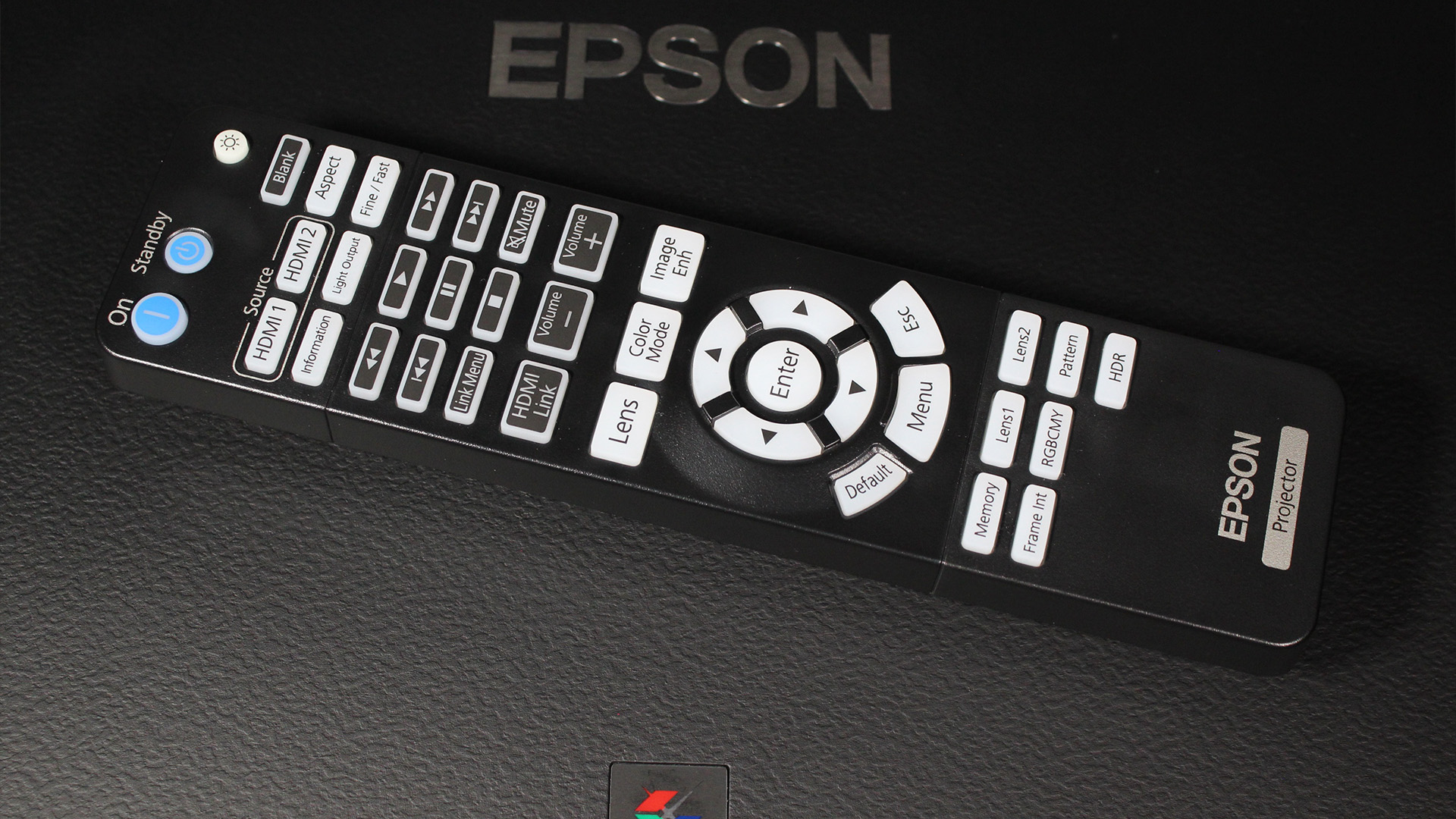
The included remote control is chunky but nicely weighted, fitting neatly in the hand. It has all the major controls laid out in an intuitive fashion, and crucially there’s a backlight that makes it easier to use in the dark. There are also memory buttons for quickly and easily changing the image’s shape for different aspect ratio movies, which is handy if you are using a 2.35:1 ‘Scope screen.
EPSON EH-QB1000 REVIEW: VERDICT
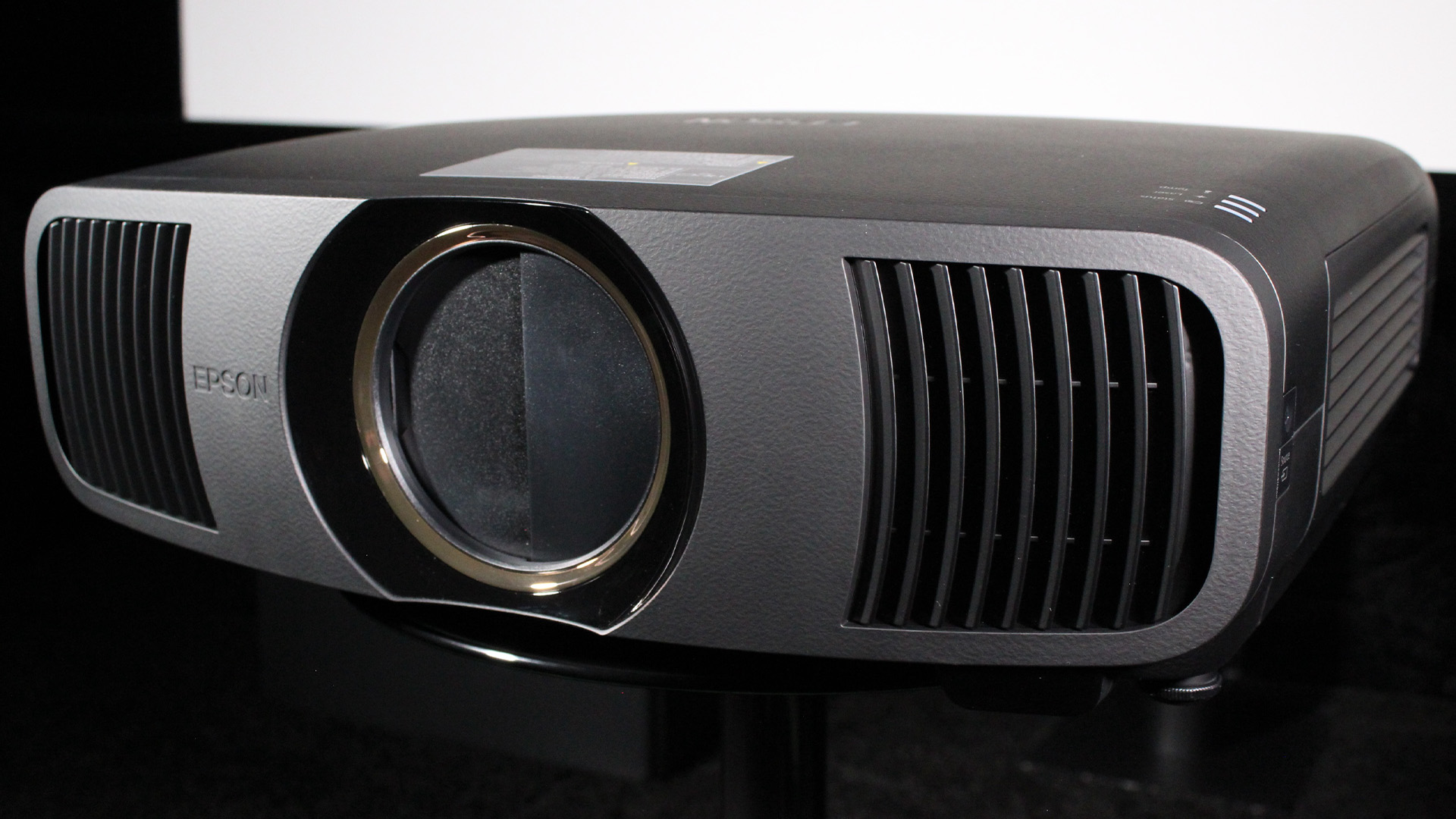
The Epson EH-QB1000 is an impressive home cinema projector that delivers bright and accurate images. HDR is excellent thanks to new dynamic tone mapping, although the black levels and shadow detail do disappoint – but that's not a surprise at this level of budget, really.
Otherwise, this capable beamer is hard to fault, with a host of features that include a long-life laser light source and HDMI 2.1 inputs. The latter allows the QB1000 to support HDR10+ and 4K/120Hz, which along with a low input lag is sure to please gamers. All of which makes this projector ideal for anyone wanting high-end performance at an affordable price.
Also consider
The Epson EH-QB1000 currently offers fantastic value for money compared to its direct competitors. The Sony VPL-XW5000ES might be native 4K, but it doesn’t have motorised lens controls, dynamic HDR tone mapping, or HDR10+ and 4K/120Hz support.
The JVC DLA-NZ500 is more expensive, and while it is native 4K, has better black levels, and does include motorised lens controls, lens memories and HDR10+, it still lacks support for 4K/120Hz and doesn’t have a game mode – so it’s not the best choice for gamers.







